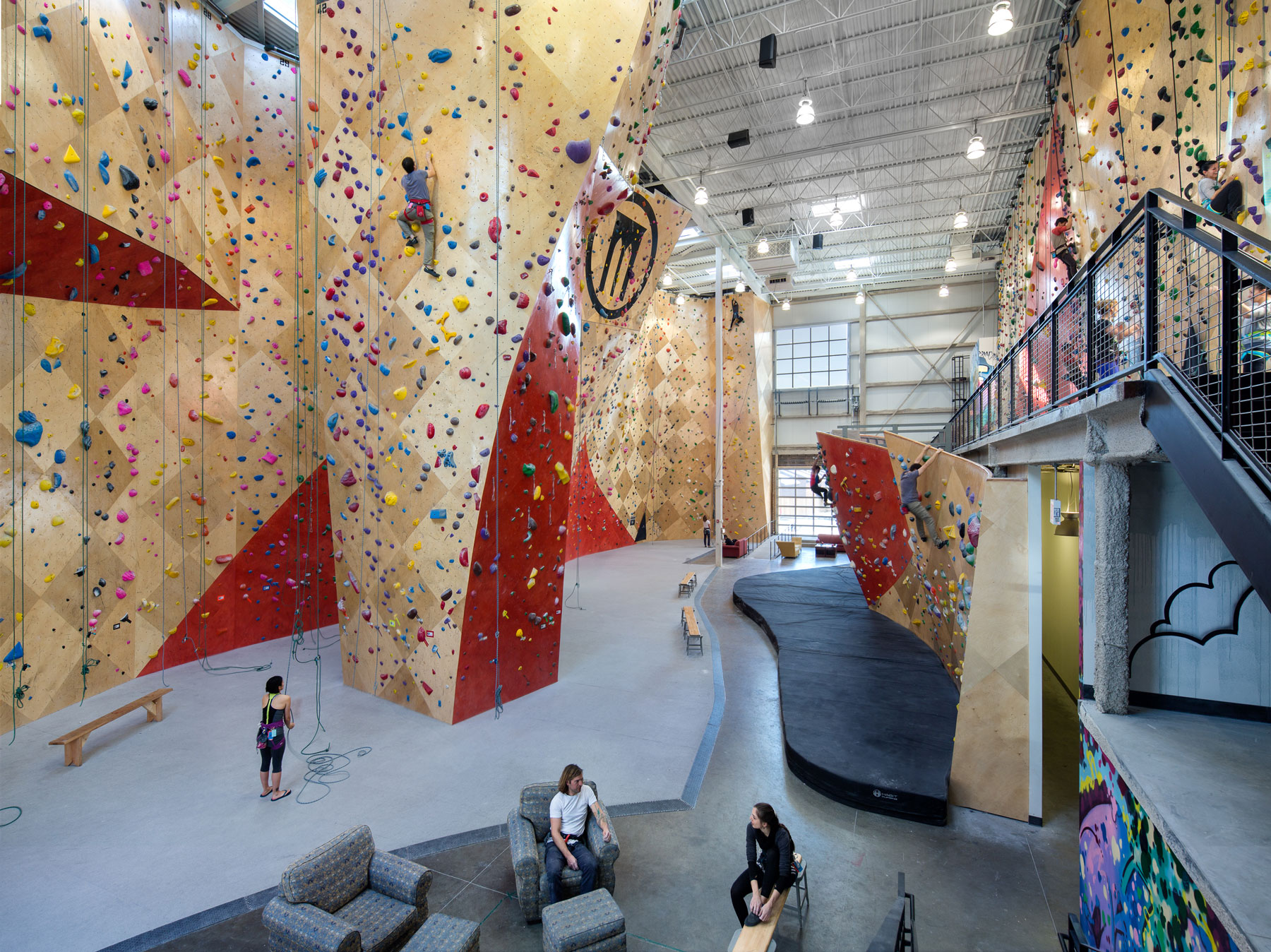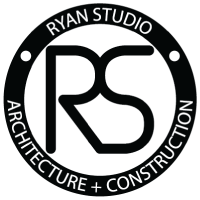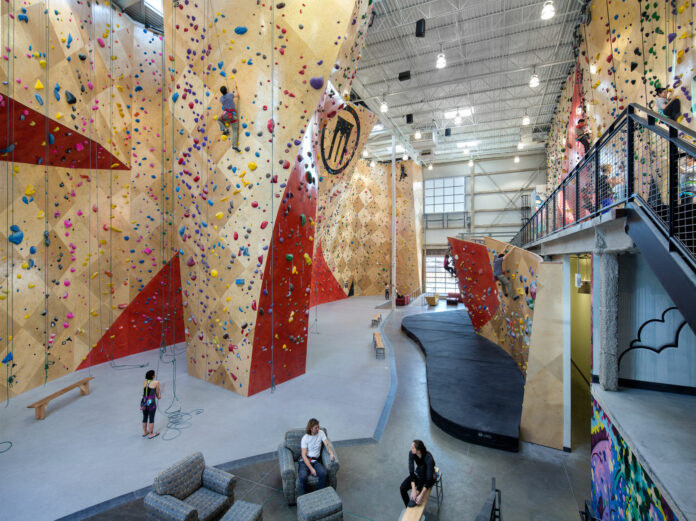
Developing a climbing gym project and bringing your dream into reality is never the same path for everyone. Everyone has a different business model, with different skills and partners. Further, the context you’re entering into is always different as well; there are different landlords, different financial situations, different locations, different budgets and timelines.
These factors create a lot of combinations, and that’s not even talking about the look, layout and construction of the project itself. We can, however, focus on some first principles and some lessons that are applicable to any climbing gym or commercial project.
You Need to Put the Pieces Together Properly
Regardless of your specific situation, every project has a series of pieces that need to be put together strategically, based on your goals. By establishing these goals early, you can spell out a narrative, or a “script,” for how we’re going to go from today to a successfully completed project. This script includes things like budgets, timelines, project delivery methods, team structure, and many more concerns that should be strategized from the early phases of a project. Without this script, you’re going to be moving different pieces without clarity around who does what, when, and what to expect from them.
Things to Do:
1. Keep the Big Picture in Mind and Build a Strategy Around It
I’ve seen projects that are in construction without budgets being figured out. This is always a red flag, but things like that are more common than you might think and show a lack of understanding around the complete project strategy.
In reality, even with vague project ideas, we can set the rules of the game we’re going to be playing here. This field of play becomes your baseline that is the anchor for your project, and everyone should be rallying this strategy to keep things on track.
As things evolve, let your strategy evolve, but putting things off can lead to major budget blowouts and pinch points that should have been avoided earlier in the project.
2. Trust Your Gut (this may sound cheesy, but it’s very important)
Many of my clients know something is wrong, but they can’t put the specific or technical words together. They are often asking, “Why can’t I get an answer to this?” or “Why didn’t they do that?” Their gut instinct is often right on, but they may not know what to do about it.
If you feel like something is seriously wrong with your project, you need to quickly get support and answers from people who have actually been there before and can steer you in the right direction before you lose too much money and time.
You cannot be wallowing in a project, without anyone steering the ship. If that’s how you feel, ask around and get help. When you find people who actually know what they’re doing, you’ll be able to feel it, and real actionable answers will be at the tip of their tongue.
3. Look for the Right “Fit” When Hiring
You should be looking for professionals who don’t have to significantly change lanes. For instance, hiring a contractor who is used to doing massive institutional jobs or houses probably isn’t the right fit for a climbing gym. This is because your project would be a significant change in the way they normally work, the type of work they do, or the scale of projects in their portfolio. The same goes with Architects and everyone else. If their company is too large, you will pay for that in some way; if their company is too small, you will pay for that in other ways.
One specific way to screen the fit is to ask ‘no’ questions, where you actually want them to say “no”. Things like schedules and budgets are areas where you want someone who’s an optimistic realist. If you’re just hearing about all blue skies, then the red flags should be going up. You don’t want a “yes” person; you want someone who knows what they can and can’t do. This constructive feedback shows a level of professional self-awareness and an understanding of how things really work.
If you match your budget, aesthetic, and project delivery methods to your team, they simply don’t have to move as far from their baseline, which is far better than asking them to change or reinvent their workflows for your project.
Things to Not Do:
1. Don’t Simply “Hope” for the Best
I speak with many folks who don’t have much experience with developing climbing gym projects, and they often end up hiring other people who are inexperienced in this area. Without the proper support team, you end up hoping for the best. If there aren’t any major issues, maybe it works out. If you have a problem, who knows what to do?
You may not even know what a good team looks like, but the short version is that there are places you can save a buck and places where you shouldn’t. So, get help from someone who knows what’s going on and can effortlessly give you real answers that make sense, so you’re confident you will be getting the best instead of just hoping for it.
2. Don’t Be the Guinea Pig
When you’re looking to build your team, you don’t want to ask people to change lanes (as previously mentioned). This is because you don’t want to be the test subject for their new business, a new type of project, or some design agenda that you don’t care about (unless you’re aware and OK with that).
The issue is that some contractors and Architects will say “yes” to almost anything. They’ve been trained that way, but it doesn’t always help you, the Owner. You don’t unintentionally want to be their guinea pig, since doing so can lead to significant extended time and extra money being spent. Ask questions, look at their portfolio, and find someone who actually knows what they are doing, so that you’re able to get the project done efficiently and open your doors sooner. Everyone has to start somewhere, but do you really want to be their test case?
3. Don’t Make Changes at the Wrong Time
Projects take years to develop, and inevitably you change, your ideas evolve, and your business evolves as well. It’s very easy to be distracted by the next “shiny object,” but that detour can kill your project, flat out. Every project has a freak out moment, so how do we keep our wits along this journey?
Changing things early in a project is easy because there aren’t many people involved and the degree of detail is low still. As you move forward, it’s more and more critical to hold onto the script or narrative at the core of the project.
By clearly defining your goals and intent at the start of projects, you can stack decisions and look back at them to remember why you made other decisions on top of them. This baseline becomes the filter for evaluating if something new is in-line with these goals which were established months or years prior.
One Bonus Tip for a Smooth Project
If you want things to be smooth, don’t play games by taking from Peter to pay Paul or by under-funding your project. The professionals and contractors working on your project don’t care why you don’t have the cash. They have their own concerns, and if cash flow becomes a problem, the well will dry up very quickly.
The importance of these logistics means that you need to understand the cash disbursement schedule, from the beginning to opening your doors; if we don’t, and we can’t pay people on schedule, the project will stop, and getting it started again is always costly and time consuming.
This process is very serious, but it isn’t anything new; it’s just a matter of putting the pieces together in a smart and strategic way that supports your goals.
Good luck with your projects out there,
Chris Ryan
AIA, NCARB
www.ryanstudio.us/climbing
This story was paid for by the sponsor and does not necessarily represent the views of the Climbing Business Journal editorial team.

Ryan Studio, led by building development and project advisor Chris Ryan, works with climbing gym owners to turn their ideas into successfully completed building projects. We get there by understanding your most important goals, and then combining excellent design with proven processes, strategies and efficiencies to mitigate risks and guide you every step of the way.







